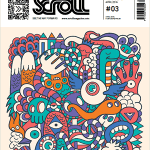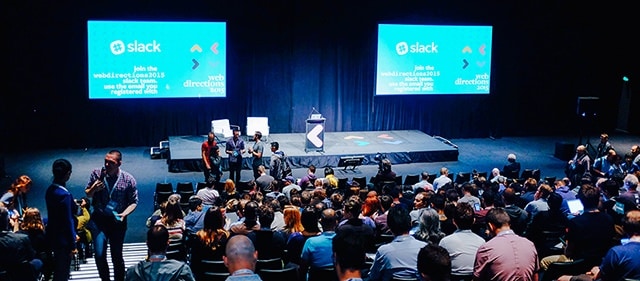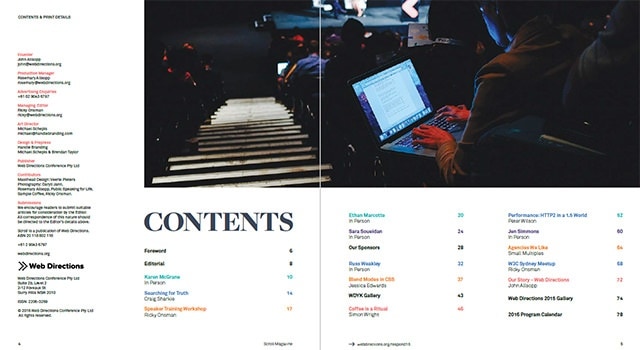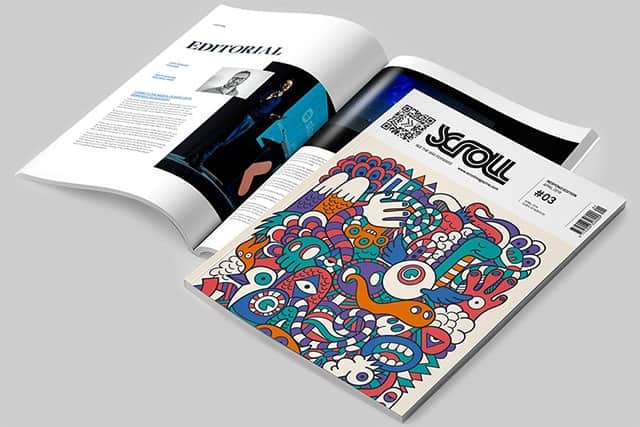 In 1999, the Australian rock band You Am I, a trio since their inception 10 years earlier, decided to hire a second guitarist. They could have had their pick of any number of white hot players who could learn their repertoire.
In 1999, the Australian rock band You Am I, a trio since their inception 10 years earlier, decided to hire a second guitarist. They could have had their pick of any number of white hot players who could learn their repertoire.
Instead, they chose an 18-year-old fan who had come to their attention by accurately transcribing their entire most recently released album for a fan website.
He already knew every song inside out.
The risk the band took in hiring an unknown was mitigated by his obvious love of their music. Davey Lane has been with the band ever since, has been nominated for several Best Guitarist awards and has guested with the likes of Jimmy Barnes and Crowded House.
I feel a bit like Davey Lane.
I’ve been an unabashed fan of Web Directions since I went to their first (then Web Essentials) conference in 2004. I’ve been to every Web Directions conference in Australia since, I even went to Vancouver for a Web Directions North conference in 2008 (best conference ever), and I’ve attended any number of their other local events. I have the conference bags. All of them.
My annual professional development budget is split between attending Web Directions events and buying books and online courses (hello, SitePoint). A considerable proportion of the technical expertise I have comes from following the work of people to whom I’ve been exposed at Web Directions. I know Web Directions’ work inside out.
And now I work for them.

At the last Web Directions conference in November, founder John Allsopp asked me for some ideas on how to build their archive of conference presentation videos into something that would give extra value to attendees as well as attract new attendees for future events.
The conversations became more earnest as the ideas developed, until in February John revealed another layer to his plan, and invited me to work on it as a project for 20 hours a week.
This part of the grand plan was to do something different for the next conference program – in fact, to do away with the idea of the printed conference program per se, and instead produce a publication that would complement the conference, give some insight into the themes and the speakers, and give attendees something relevant and worth keeping.
This would be a high grade printed magazine called Scroll. Good quality gloss paper, perfect bound, full colour photos – and with content that would include interviews with some speakers, articles by other speakers, some feature content on topics of interest to web professionals – a real magazine built to appeal to conference attendees and anyone interested in the web.
I already knew that Web Directions had changed its approach to its conferences. The previous year’s Code conference had been successful, and it was decided that henceforth there would be a two-day Code conference held in Sydney and Melbourne, a two-day Respond conference in both cities that focused more on design themes, a one-day Transform conference in Canberra to tap into the current overhaul of how government delivers information via the web and then an end-of-year two-day conference in Sydney on web ideas, philosophies and approaches, to be called Direction.
The magazine would be produced to accompany the Respond conference in April, Code in July and Direction in November.
Wait.
Wait a minute.
If the first Respond conference in Sydney starts on 7 April, and we’re having this conversation in mid-February, how much time do we have to pull this together?
Allowing for time to get it printed and bound, about six weeks.
Six. Weeks.
Back when I worked for HWW in the 90s, we would have to provide copy for the glossy magazines two or even three months in advance in order to meet their deadlines.
And here I was being asked to aggregate, format, edit and compile all the content for an 80-page magazine within six weeks.
“Of course I’ll do it!”
It’s probably not necessary to go into all the gory detail of the following six weeks.
Suffice to say it took a bit more than 20 hours a week to pull this off, and we had to work out a series of fallback options in case not all our contributors could come through in time (which did happen in three cases), and the last few days held the extra pressure of the Flyman office suffering some minor flooding. But, we did it.
At this point, I should explain that “we” in this sense means mostly me and Michael Schepis, albeit both supported by our respective teams. Michael is Creative Director at Handle Branding, an expert in brand building and, frankly, a brilliant art director.
He is entirely responsible for the look and feel of the final result, and I mean every aspect of the look and feel: layout, typography, colours, photo choices, illustrations, page dimensions, page thickness, white space …

Working with Michael – remotely: Michael in Sydney and me in Corrimal – was a lot like being back in the HWW days, where deadlines were final, mistakes were painful and panic was the default position.
How this kind of project works, or doesn’t, comes down to trust. Even if you have the skills, without trust between the key players, the results won’t hit the heights you’re aiming for.
I liked the tone of our early email communication, and a phone conversation was very positive, but it was when I had provided Michael with enough text content for him to produce a draft PDF of a few pages that I began to appreciate just what he brought to the project. In this timeframe, a first draft has to be close to final, and what Michael produced was indeed very close to the finished product.
I think the text I provided also increased Michael’s confidence in the project, and our trust in each other was cemented – not just to get this done, but to produce something special, something that matched John’s ambitions for the project.
Another form of trust was that placed in us by John. He trusted Michael and I to use our judgement and skills to give corporeal form to an idea he had, and he gave us full control: me over the text content, and Michael over everything else.
The magazine itself is actually the third edition under the Scroll masthead. Two editions of Scroll were previously produced by Web Directions in 2008 and 2009, as accompaniments and programs for those respective conferences.
The logo, designed by Veerle Pieters, was too beautiful not to keep and helps maintain a link to those two early editions, but it’s about the only thing left. It did help that I have a copy of both Scroll #1 and Scroll #2. I may have mentioned I’m a Web Directions fan.
Anyway, you can see the end result for yourself.

We produced a PDF edition of Scroll that can be downloaded free of charge. Just put in your name and email address so we can keep in contact.
You see, there are more parts to the grand plan. The next will become apparent within a few weeks, and you will be mighty glad you heard about it first. And then there’s more to come.
There are paper copies of Scroll around. You could probably try contacting Web Directions if you’re very keen. They are also turning up at web related meetups.
Here’s the download link: http://www.webdirections.org/scrollmagazine/.
Let me know what you think.
Love the story and love the produce. Having been involved in several such ventures (none quite so gloriously glossy, however) it is extraordinary that you pulled it off in the time frame. Congratulations!